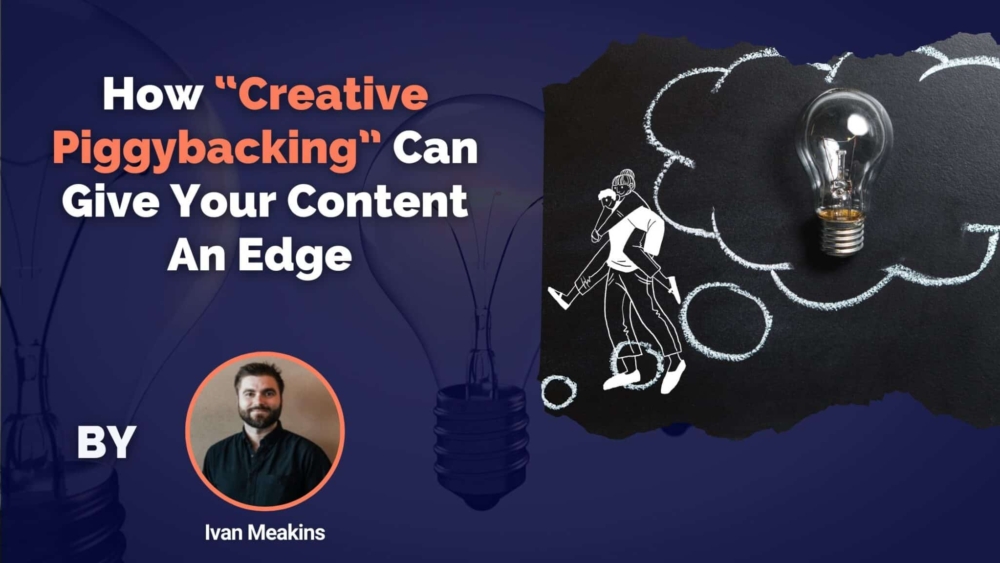By Ivan Meakins
“If I have seen further, it is by standing on the shoulders of giants.” – Isaac Newton.
This quote, written by the famous scientist in a letter to Robert Hooke, perfectly captures the essence of collective learning. As humans, we have the ability to build on what others have done before and improve or update it to match our own specific needs.
But how can we apply this to content creation? How do you hack this innate human trait to shape your own message and provide something truly valuable for your audience?
The little-known inspiration behind A Bug’s Life
Anyone who’s seen the 1998 Disney Pixar classic – A Bug’s Life – would instantly be drawn in by this charming tale. But what most people don’t know is that this story has its roots in a completely different genre of cinema.
The actual plot from A Bug’s Life comes from a 1954 Japanese epic film called Seven Samurai, edited and directed by Akira Kurosawa. In this period drama, we see some villagers seeking the protection of a bunch of samurai to fend off bandits who are attacking their village – pretty much the same plotline as A Bug’s Life (minus the samurai).
The core story found a new home, a new form, and a new audience in A Bug’s Life. It went from being a black-and-white movie targeted at adults to a very colourful, childish animation that most kids (like myself back in the day) watched over and over again.
The art of borrowing big ideas
Borrowing and reshaping other people’s ideas is a crucial part of the creative journey, which – when done right – can only improve the quality of our content and bring our audience closer to us.
As a content creator or business leader, it’s easy to get caught up in the quest for originality. We put a lot of pressure on ourselves to come up with unique, never-been-heard-of-before ideas.
But what if I told you that most of what you need is already out there? You just need to harness it and give it your own spin.
All we need is to look behind us – leveraging the great pieces of content from the past and refitting them to shape our own big message.
Think of it like a cauldron of ideas that have slowly been simmering away in the annals of time. In this case, you’re just adding your own little flavour to that cauldron of stew and offering it to your audience in a new way.
Adaptation vs plagiarism
One thing I’d like to point out is that this isn’t lifting someone else’s work and passing it off as your own.
According to Pablo Picasso, “great artists steal.” I think what this quote means is that great artists see and acknowledge the opportunity in other people’s ideas. They build off of these ideas while still acknowledging and giving credit to the people who created them in the first place.
The beauty of this “creative piggybacking” is that when you spin these existing ideas to fit your own narrative and niche audience, you can begin to use that content to solve problems in ways that the old form never could.
In essence, you’re taking a great idea from somewhere outside of your world to discover a whole new purpose and help a new audience solve their problems.
How to piggyback properly
Imagine that you’re a leadership coach with a passion for detective stories, and you’re looking to make a mark on the world through a business book.
How can you infuse great ideas from some of the best thrillers into your content to create something truly valuable for your audience?
You could start by replicating the narrative structure of an Agatha Christie novel – the mystery-solving, whodunnit approach – and use that to shape the narrative of your leadership book. Each chapter can present a problem that needs solving, and you, as the author, through a series of helpful leadership clues, can help the reader crack the case.
The beauty of this framework is that you’re piggybacking off a widely-known and loved concept to create something refreshing for your readers. When you talk about leadership in the context of a detective story, anyone who’s familiar with the genre will automatically catch on.
One of our clients, Caroline Sanderson, used this tactical approach in her book, The Salon Jedi, where she leveraged her love of the Star Wars universe to teach people how to build a successful salon business.
The next time you’re planning a project, why don’t you think of the themes you really enjoy and try to find the best stories or content hooks within these fields? I like to think of these stories as the giants Newton was talking about in his letter – they can act as the inspiration behind your new project.
By leveraging the elements you love and infusing your content with these stories, you can create impactful content that connects with your audience. What’s more, this approach relieves you of the pressure to constantly invent something wholly unique all the time, meaning you will have an endless reservoir of ideas coming through.
And who knows, maybe your content will become the giant that someone else stands on.
Are there any great ideas you’re currently working on? We’d love to hear them! Drop us a line at info@writebusinessresults.com, and if you’d like to find out more about where to get refreshing ideas for your content, check out our weekly podcast, Content Untapped.
